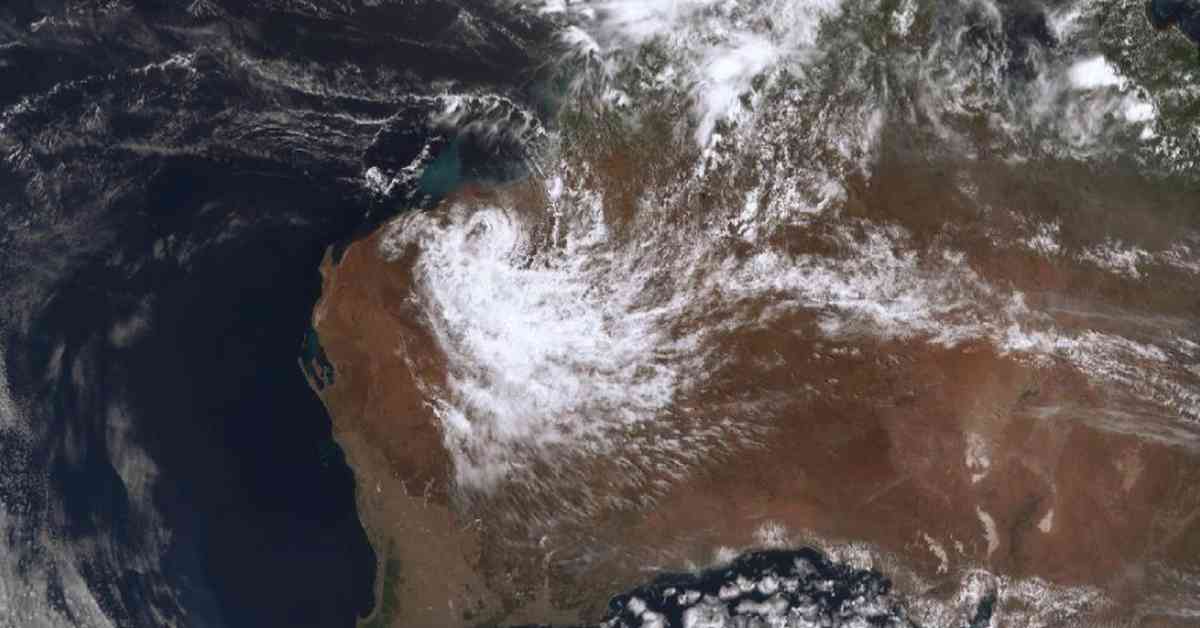Ex-tropical cyclone Zelia wreaked havoc as it made landfall near the De Grey River in Western Australia, surprising residents and authorities alike. The storm, which was initially categorized as a powerful category 4, brought a deluge of rain and fierce winds that caused widespread damage, uprooting trees, flooding roads, and leaving homes battered in its wake.
As the system weakened overnight, the Bureau of Meteorology downgraded Zelia to a tropical low. However, the threat of heavy rainfall and major flooding persisted as the system continued its southward trajectory along the Western Australian coast. Senior meteorologist Angus Hines emphasized the ongoing risk of flash flooding in the southeast Pilbara and northeast Gascoyne districts, with rainfall totals of up to 100mm expected within a 24-hour period.
The impact of the tropical low extended beyond the initial landfall, with major flooding reported in the De Grey River Catchment. A flood warning was issued for the Pilbara Coastal Rivers, while the Sandy Desert faced an initial flood warning. The Fortescue, Ashburton, and Gascoyne Rivers were under close watch for potential flooding, highlighting the widespread risk posed by the lingering effects of ex-tropical cyclone Zelia.
Despite the challenges posed by the inclement weather, local emergency services were quick to respond to the crisis, with the State Emergency Service receiving 60 calls for assistance. The full extent of the damage caused by Zelia remains unclear at this time, as authorities work tirelessly to assess and address the aftermath of the storm. As the region braces for further rainfall, there is cautious optimism that the worst may soon be over, with forecasts indicating a gradual easing of the wet weather in the coming days.
Impacts on the Community and Environment
The sudden and severe nature of ex-tropical cyclone Zelia’s landfall left many residents reeling from the destruction wrought by the storm. Witness accounts described harrowing scenes of flooded streets, damaged homes, and uprooted infrastructure, painting a vivid picture of the chaos and devastation that ensued in the wake of the storm. Local communities banded together to support one another in the face of adversity, demonstrating resilience and solidarity in the face of a natural disaster.
Experts underscored the importance of preparedness and vigilance in the face of extreme weather events, urging residents to heed warnings and take necessary precautions to safeguard themselves and their property. The unpredictability of tropical systems like Zelia serves as a stark reminder of the power and capriciousness of nature, highlighting the need for ongoing monitoring and response efforts to mitigate the impact of such events in the future.
Looking Ahead: Recovery and Resilience
As the immediate threat posed by ex-tropical cyclone Zelia begins to recede, the focus shifts to recovery and rebuilding efforts in the affected areas. Emergency services and local authorities are working tirelessly to assess the extent of the damage and provide support to those in need, while also planning for the possibility of further rainfall and flooding in the days ahead.
The resilience and spirit of the community will undoubtedly play a crucial role in the recovery process, as neighbors come together to lend a helping hand and rebuild what was lost. The lessons learned from the experience of ex-tropical cyclone Zelia will inform future preparedness and response strategies, ensuring that the region is better equipped to handle similar events in the future. As the sun sets on this chapter of uncertainty and upheaval, hope remains on the horizon for brighter days ahead.












